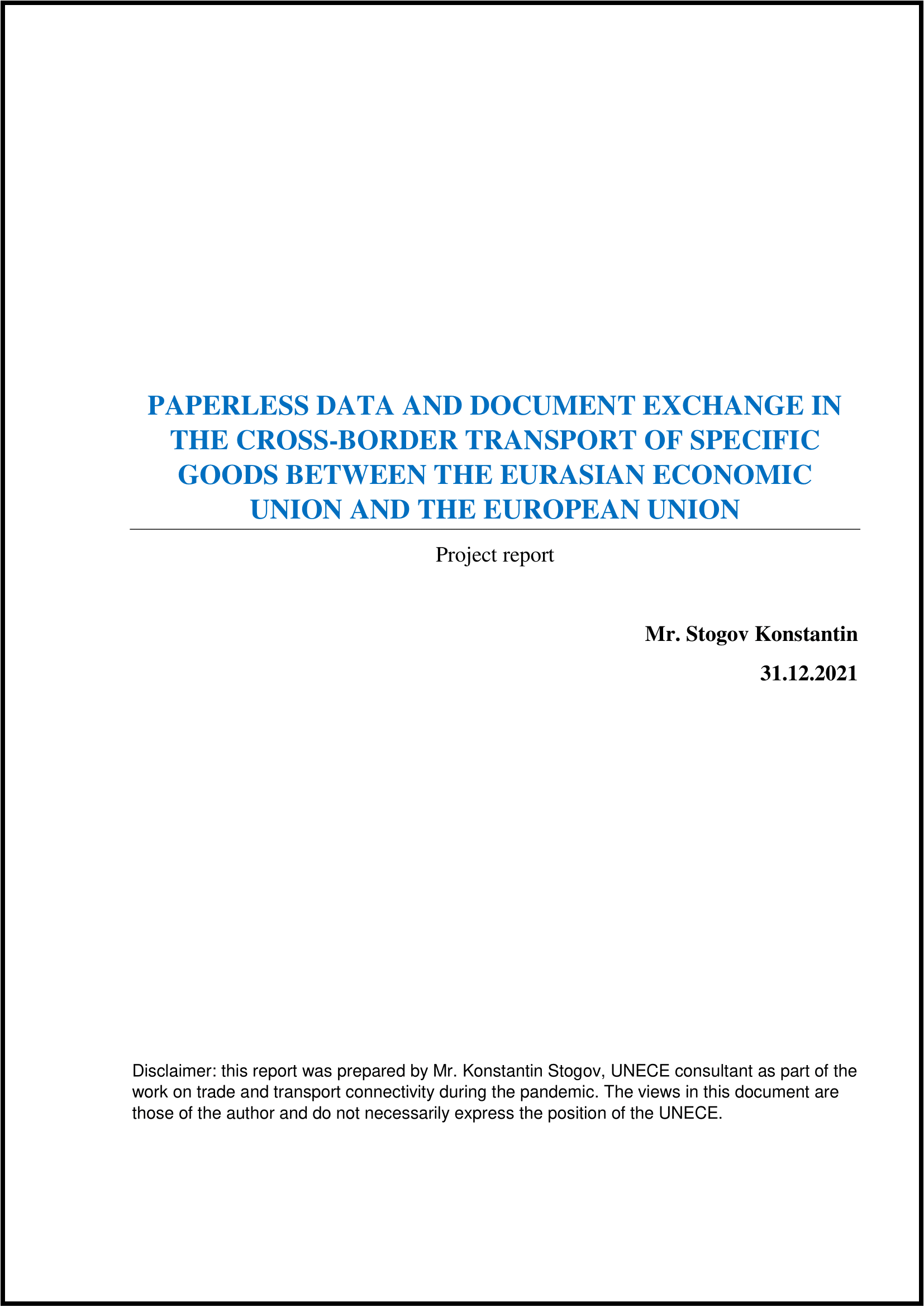
In the context of the recovery from the COVID-19 pandemic and the general direction of building back better this project aims to develop and practically test paperless data and document exchange in the cross-border transport of specific goods between the Eurasian Economic Union and the European Union.
Focusing on a specific pilot case of multimodal delivery of goods author of this study conducted research and offered practical recommendations how to align used by different participants in the supply chain in their IT systems to the UN/CEFACT standards and Multimodal Transport Reference Data Model, allowing for a seamless exchange of electronic data and documents (B2B exchange), as well as developing electronic B2G documents for submission to regulatory authorities.
Main results of the study:
1. Based on a specific example of exports/imports of specific goods, demonstrated the opportunities and benefits of using the UN/CEFACT Multimodal Transport Reference Data Model (MMT RDM).
2. Explored what electronic documents and data exchange systems are used in multimodal transport by participants in the supply chain, based on a particular product. Examined on what data model the existing electronic document systems are built.
3. Carried out data mapping between the standards for electronic data and documents recommended by UN/CEFACT and electronic documents used by participants in the supply chain in their IT systems.
4. Carried out data mapping from the specific documents to be developed and used in the pilot project to the reference data models of UN/CEFACT (notably, the MMT RDM) and the data model of the Eurasian Economic Union (EOMI – the Eurasian open integration model, used in the EAEU for B2G electronic document exchange).
5. Suggested ways and recommendations to provide seamless B2B and B2G data and document exchange based on a data converter using the harmonized and standardized UN/CEFACT data model.
Language versions and Annexes: